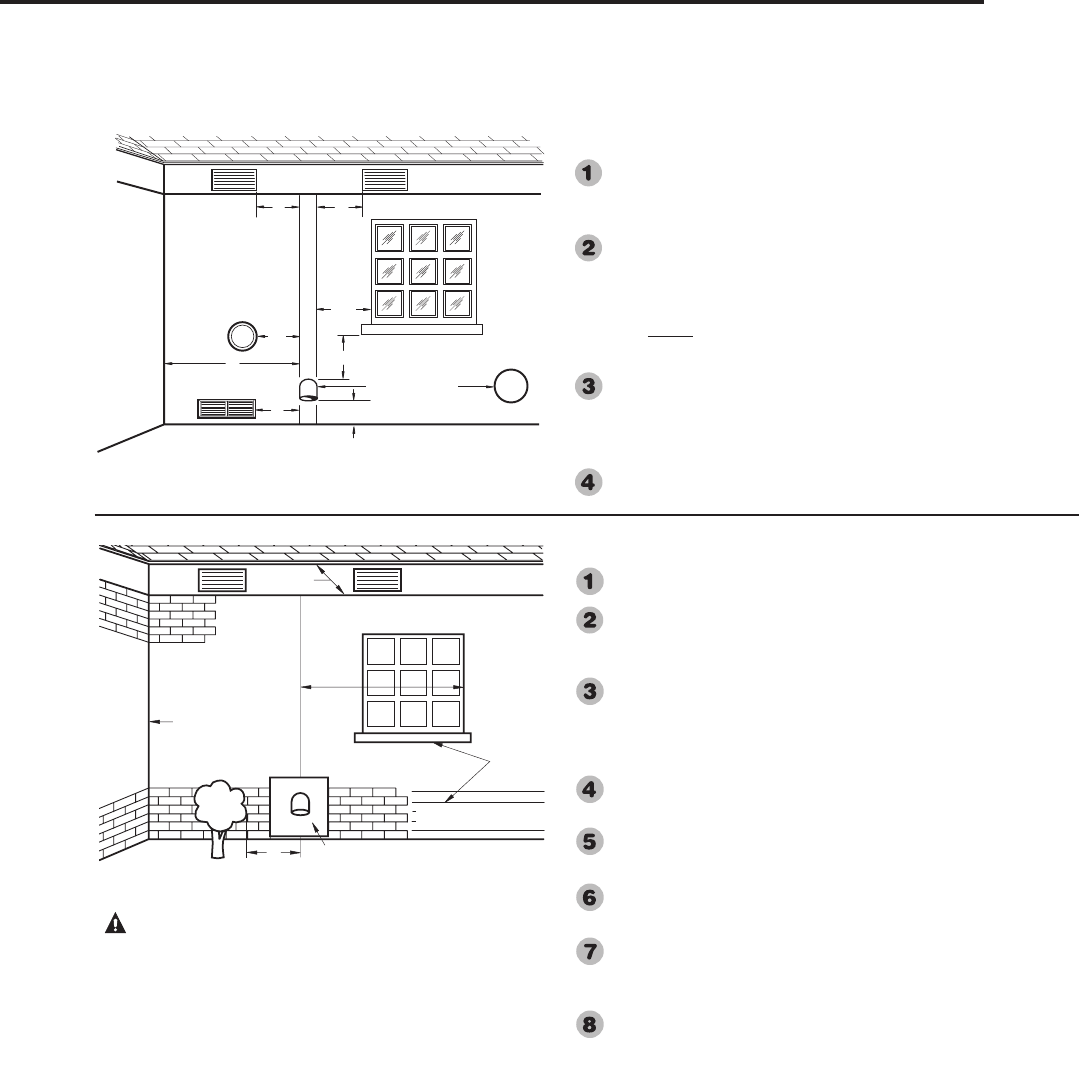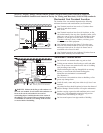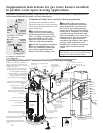
15
Additional Considerations
Do Not install vent terminal under any patio or deck.
To help prevent moisture from freezing on walls and under
eaves, do not locate vent terminal on the side of a build ing
with prevailing winter winds.
When terminating the vent pipe through brick or masonry
surfaces, a rust-resistant sheet metal backing plate
behind the vent termination is recommended.
(See illustration.)
Do Not locate vent terminal too close to shrubbery, as flue
gasses may damage them.
Caulk all cracks, seams and joints within six (6) feet of vent
terminal.
All painted surfaces should be primed to lessen the chance of
physical damage. Painted surfaces will require maintenance.
Insulate vent pipe exposed to cold conditions (attics, crawl
spaces, etc.) with inflammable material to help prevent
moisture from accumulating in vent pipe.
Do Not extend exposed vent pipe outside of building.
If soffit vent is too
close, block off and
install new vent at
another location
Inside
corner
Caulk
Caulk
Caulk
6' (1.83 m)
caulk
zone or to edge of
window etc., starting
within 6'
Rising moisture will
collect under eaves
4'
6' caulk zone
2 ft. sq. sheet metal plate on
brick or masonary surface is recomended.
6'
WARNING: Moisture in the flue gas will condense as it
leaves the vent terminal. In cold weather this condensate can
freeze on the exterior wall, under the eaves and on
surrounding objects. Some discoloration to the exterior of
the building is to be expected. However, improper location
or installation can result in severe damage to the structure
or exterior finish of the building
Horizontal Vent Terminal Location
The location of the vent terminal depends on the following
minimum clearances and considerations (see illustration):
Vent Terminal must be at least twelve (12) inches above
grade level and above normal
snow levels.
Vent Terminal must be at least four (4) feet below, or four
(4) feet horizontally from any door, operable window, soffit,
under eave vent or gravity air inlet to the building or other
appliances, or from gas or electric meters. Do not locate
vent above walkways, doors, windows, air inlets, gas or
electric meters or other equipment.
Vent Terminal must be at least three (3) feet above any
forced air inlet located within ten (10) feet. Any fresh or
make-up air inlet such as for a dryer or furnace area is
considered to be a forced air inlet.
Vent Terminal must be at least eighteen (18) inches from an
inside corner formed by two exterior walls.
4'
4'
Soffit vents
18"
4'
4'
4'
18"
Electric
meter
Inside
corner
3' above
if within 10'
Fresh
air
intake
12" (Above grade/snow level)
window or vent
NOTICE: All pipe, fittings, solvent cement, primers and procedures must conform to American
National Standards Institute and American Society for Testing and Materials (ANSI/ASTM) standards.
2 ft. sq. sheet metal plate on brick or
masonry surface is recommended.


















